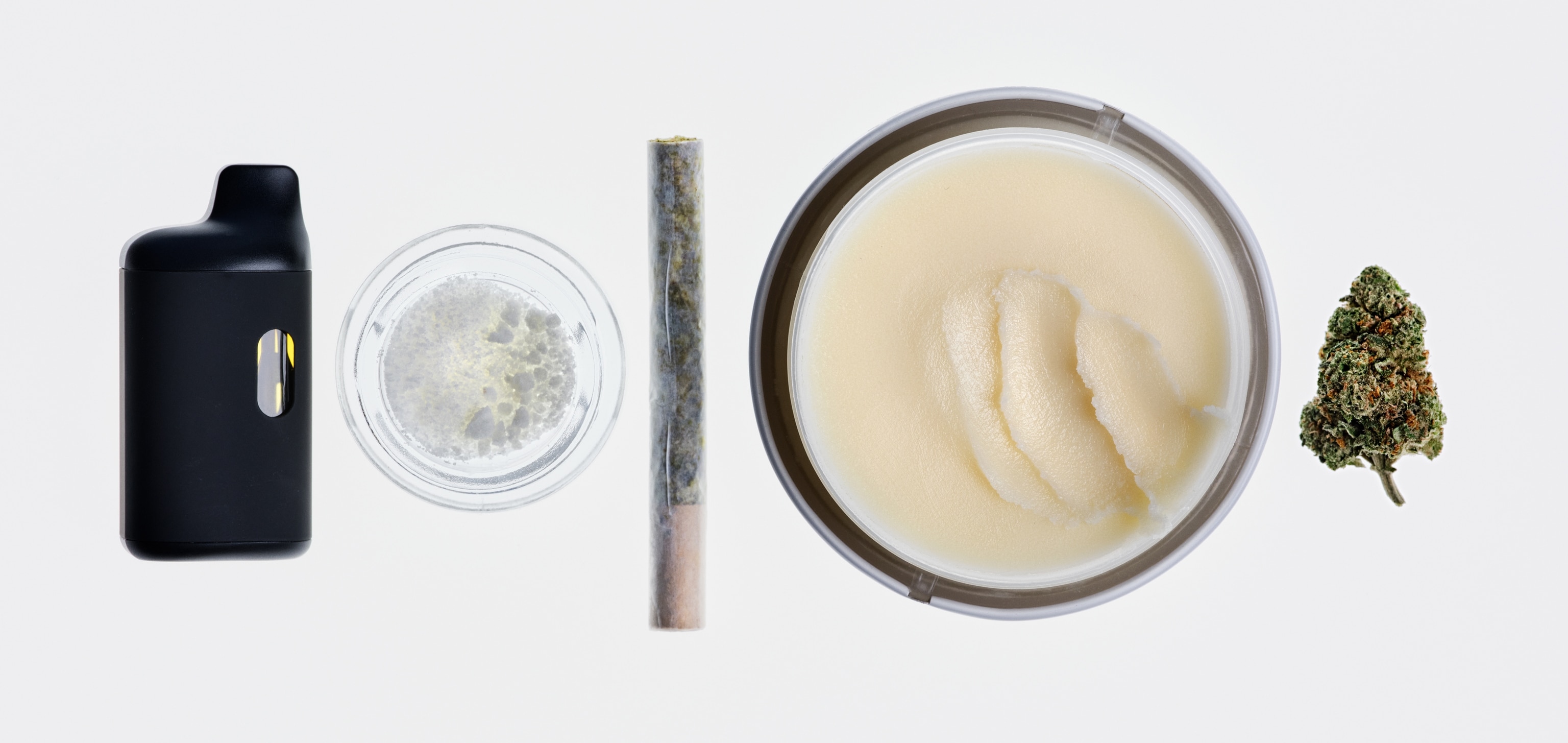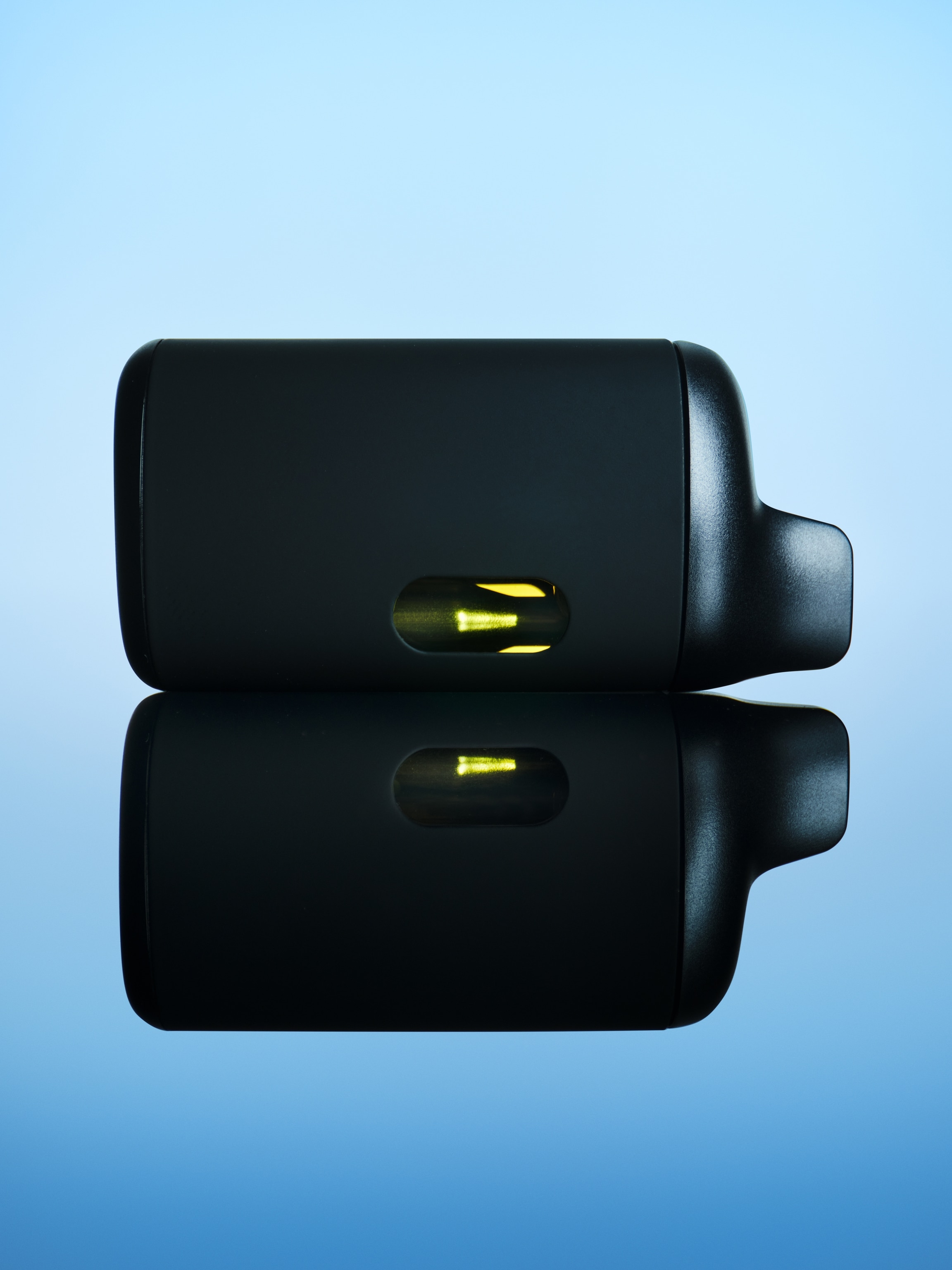This article is part of The New Cannabis, a National Geographic exploration into the most critical questions raised by today’s stronger, stranger, ever more accessible weed. Learn more.
Once upon a time, getting high from marijuana entailed smoking a joint, a pipe, or a bong. Those days are gone. Now there are numerous routes of consumption, some of which deliver a more potent buzz—but carry a risk of more serious side effects. In the latter category are dabbing and vaping, which are most prevalent among adults ages 18 to 24, according to a 2025 report from the Centers for Disease Control and Prevention.
With vaping, cannabis oil or flower is heated to a temperature that releases cannabinoids as vapor to inhale. Some vaping devices can be loaded with dry herb or cannabis flower, while others are intended to be used with high-potency concentrates like oil or resin.
One reason it appeals to teens and young adults: “Vaping is a discreet way to use cannabis in a public space—there’s a convenience factor,” says Deepak Cyril D’Souza, professor of psychiatry at the Yale School of Medicine and director of the Yale Center for the Science of Cannabis and Cannabinoids. “One hit can deliver a lot, and get you high very quickly.”
With dabbing, by contrast, people inhale vapors from highly concentrated THC-based oils—such as wax (a gooey form of hash oil) or shatter (a solid, glasslike version)—that have been heated, often using a blowtorch and a modified bong or a water pipe called a dab rig. Dabbing isn’t as discreet as vaping because “with dabbing, you need paraphernalia,” D’Souza says.
Handheld dab pens are simpler alternatives—but some dab fans suggest dab pens can sacrifice flavor. Making such devices smaller, simpler, and cheaper is a major focus of the increasingly innovation-driven cannabis industry.

From left to right: DISTILLATE VAPE CARTRIDGE Oil; THC potency as high as 95 percent. THCA SAND Concentrated tetrahydrocannabinolic acid (THCA); converts to 75 to 90 percent THC when heated. INFUSED JOINTS Pre-rolled joints blended with or coated in a concentrate product; varied potency. CANNABIS TOPICALS Balms and creams applied to skin; nonintoxicating, typically low THC content. MARIJUANA FLOWER THC potency can reach nearly 35 percent; average closer to 15 percent.
Higher than ever
Back in the 1960s, the THC concentration in cannabis was around 4 percent, D’Souza notes. Currently, it’s around 18 percent, with some products made from cannabis bud at 35 percent. But “concentrates that are vaped could have THC concentrations that are 65 to 95 percent. With that comes greater risk,” says D’Souza. THC concentrations in dabs can also range from 60 to 90 percent.
A major concern is that using cannabis with high THC concentrations could have harmful effects on mental health, especially with repeated or chronic use. This includes a risk of developing anxiety, depression, paranoia, hallucinations, or psychosis, says Akhil Anand, an addiction psychiatrist and clinical assistant professor at the Cleveland Clinic. These approaches are “very dangerous. Patients are putting themselves at high risk for psychotic symptoms.”
“It’s not the method per se that’s risky. The main issue is that dabbing and vaping are associated with very high levels of THC,” adds D’Souza. “We know that negative consequences of THC are dose-related. The more you’re exposed to the higher concentrations of THC, the more likely there are to be negative consequences.”
Meanwhile, some of the mental health risks are especially high for teens. A study in a 2024 issue of the journal Psychological Medicine found that adolescents who used high-potency cannabis weekly had an 11 times greater risk of developing a psychotic disorder. Young adults over the age of 19 did not have an increased risk.
Part of the vulnerability is because teen brains are still developing and undergoing changes related to pruning, a process in which the brain eliminates unnecessary neurons and neural connections, D’Souza says. “This process leads to maturation of the brain,” he explains. Regular use of high-potency THC can disrupt these physiological processes in the brain.
“In younger people, being exposed to these potent psychoactive substances can affect cognitive skills such as memory, concentration, attention, analytical thinking, and impulsivity,” Anand says. “It’s bad for everybody, but it’s devastating in younger people because these effects can be permanent.”
Research has also found that people who experience cannabis-induced psychosis at any age have a 47 percent higher risk of developing schizophrenia or bipolar disorder.
You May Also Like
In addition to these mental health risks, there are potential consequences for physical health. Use of vaping concentrates can lead to “popcorn lung” (aka bronchiolitis obliterans, a disease that affects small airways in the lungs), shortness of breath, a nagging or persistent cough, and wheezing, says Robert Welch, a pharmacist and director of the National Center for Cannabis Research and Education at the University of Mississippi. Over time, chronic irritation of lung tissue could increase the risk of long-term damage to the lungs. And dabbing can expose people to contaminants, including heavy metals, solvents, and pesticides.

Among Gen Z consumers of legal cannabis—those born between 1997 and 2009—sales of vaping products exceed all other categories, including edibles and flower, according to the industry data firm Headset.
Who’s at risk for addiction?
With these high-potency forms of cannabis consumption, there’s a greater risk of developing cannabis use disorder—“which boils down to a loss of control of cannabis use even though it interferes with your personal life, academic life, or professional life,” D’Souza says.
Generally, “most people who are using these high levels of THC started at a lower level, with milder THC potency, and developed a high tolerance so they need more, more, more,” Anand says. “People can develop an addiction where they need it or crave it.”
This is a greater concern with today’s high-potency cannabis. “We used to think the risk of cannabis use disorder was less than one in 10—that’s because the cannabis used to be much weaker,” D’Souza says. “In the current cannabis landscape, the rates of cannabis use disorder are closer to one in three. And the younger brain is much more likely to develop addiction because the brain undergoes its greatest changes in early to mid adolescence.”
In fact, research has found that teens are at significantly higher risk of developing cannabis use disorder within the first year after starting to use cannabis than adults are.
“There’s this misconception that you can’t get addicted to cannabis,” Welch says. “That’s just not true, especially with regular or high use” of today’s high-potency cannabis.
Perhaps counterintuitively, concerns about high-potency pot have prompted calls for the federal government to remove cannabis from its most restrictive class of illicit drugs. Legal limits on THC content vary at state levels, and moving cannabis from the Drug Enforcement Administration’s Schedule I to Schedule III would allow for federal regulations on potency. This reclassification was initiated in 2024, during the previous presidential administration, but it’s now in limbo.
A version of this story appears in the September 2025 issue of National Geographic magazine.
Set Design: Mat Cullen, Lalaland Artists



